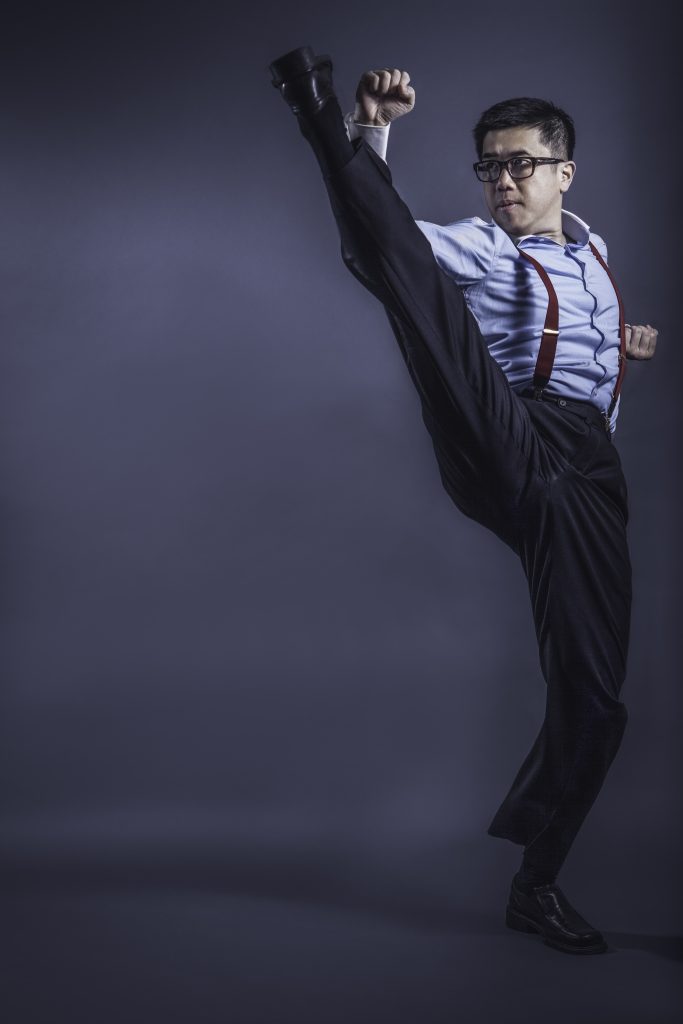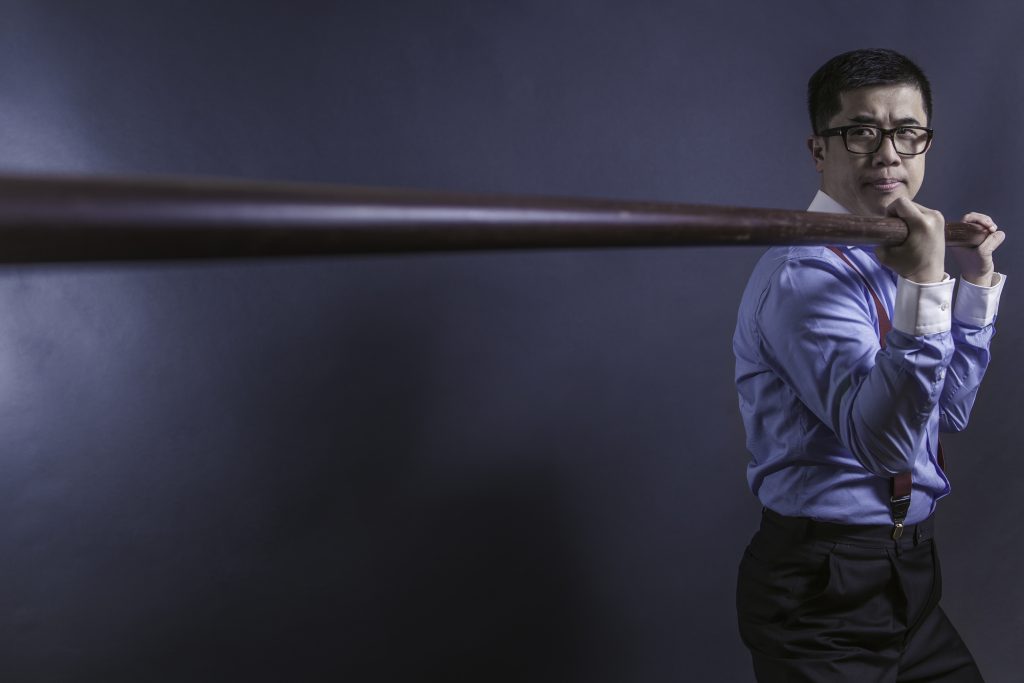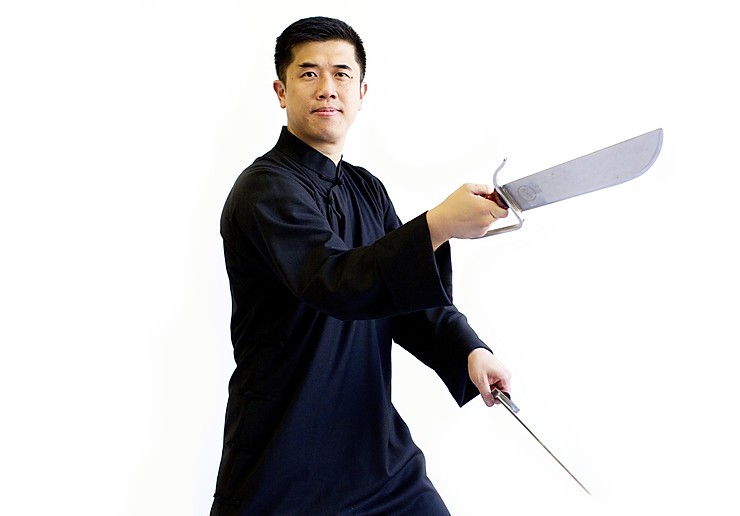Practical Wing Chun was developed by my Sifu, Grandmaster WAN Kam Leung, a senior disciple of the legendary WONG Shun Leung. The essence of Practical Wing Chun is derived from basic Wing Chun principles, but Grandmaster Wan has modified and continues to fine-tune it with his 50+ years of practice, experience and training. Despite these alterations, Practical Wing Chun shares the primary tenets of Wing Chun theory based on correct body structure and angles as a basis for a simple, efficient and direct approach to self-defense. My journey in martial arts began at an early age in the 70s. I am fortunate to have had many opportunities to experience various types of martial arts before discovering Practical Wing Chun. I am attracted to Practical Wing Chun because it is constantly evolving and improving without losing its roots. Along with its strength as an efficient and total self-defense system, Practical Wing Chun has been continuously evolving from the original Wing Chun principles. I am constantly analyzing the system and questioning why certain techniques work or don’t work, and how they can be further improved upon.
Since the creation of Wing Chun, analysis of the system has been mainly conducted through this trial-and-error method. The “Practical” in Practical Wing Chun is not a challenge to other Wing Chun styles nor an implication that they are any less efficient. It refers to a more purposeful focus on constant refinement, and the deliberate scientific study of all aspects of the system based on its principles. I am interested in taking this study to a level beyond the historical trial and error, and would like to be able to explain most movements and techniques efficiently and with scientific reasoning.

Preserving Traditional Martial Arts Culture
At my school in New York City, I place a strong emphasis on both physical and mental training, as well as in appreciating the cultural traditions surrounding the martial arts practice. I believe it is important for my students to develop both of these aspects as well-rounded martial artists, and have a deeper appreciation of the culture and traditions.
The mental aspect is often more important than the physical training because I believe that mind dictates body – our mindset directly influences our Wing Chun practice. I expect my students to always conduct themselves in an ethical manner, and to use the attained skills responsibly.
Traditional Taekwon-Do, a popular Korean martial art, has demonstrated core Chinese martial arts culture (courtesy, integrity, self control, etc.) better than many Chinese martial arts systems today. Taekwon-Do is well systemized and has become successful in the West. I think that we can adopt this teaching method in Practical Wing Chun.
From my observation, the training culture in some Wing Chun schools lacks the emphasis of its Chinese roots and the practices that educate students with the right attitude towards training. Even when a student is assisting another student, it should be a learning opportunity for both. Participation in a school should be a collaborative effort.
In the West, there is a heavy emphasis on proving whether or not a concept or technique works in reality. Wing Chun practice has also followed this mentality in both the Eastern and Western setting. Many practitioners appreciate the scientific principles and street effectiveness of Wing Chun.
However, a heavy emphasis on the technical portion of the practice has led to the neglect of the cultural practice and the mental aspect of the martial art. As a result, an imbalance between the training of the body and the mind makes the practice incomplete. Like Yin and Yang, both mind and body training should co-exist, complementing and supplementing each other. Harmony, self-control, and humility are required to balance martial skills intended for the purpose of hurting or killing. In this case, the culture and traditions drive us to achieve a balance in our lives, and to display the best attributes in ourselves.

WING CHUN AND COMPETITION
Since the late 20th Century, physical exercise and training have been strongly influenced by the philosophy of the Western physical education system, such as competition and improvement of movement skills. While competitions can inspire and drive us to maximize our potential by participating in structured, measurable challenges of skill, winning trophies should not be the sole purpose of our training. Athletes often train to challenge themselves against opponents of similar gender, weight, and backgrounds in a safe, controlled environment. Wing Chun – and traditional martial arts in general – are not meant for competitions.
Wing Chun is designed to deal with dangerous real-life situations as quickly as possible regardless of the “weight division” of the opponent(s), and is not conducive to the competition structure. Many Wing Chun techniques we practice may not be suitable or even prohibited in competitions due to the risks of causing harm to players. With insufficient control, executing these techniques could severely injure or even kill an opponent. Although some Wing Chun organizations hold Wing Chun competitions in order to promote the style to a wider audience, this is far from the original principles of Wing Chun.
I am not against the idea of competitions. Competitions can surely benefit a practitioner’s learning experience. They provide a platform for students and practitioners from different schools and martial arts backgrounds to exchange knowledge and build friendships.
As practitioners, we should maintain the spirit of self-improvement and determination that competitions allow us, but not limit ourselves to the structured rules and regulations of an organized sport, which will undoubtedly impact the core of our training methods, and distort the original principles of Wing Chun. After all, every martial arts system today has its advantages/disadvantages and unique core values. If someone is seeking to learn a martial art to fight competitively, Wing Chun might not be the most suitable choice.

STRIVING TO BE A BETTER TEACHER
My interest in teaching started when I was assisting my traditional Taekwon-Do teacher, Grandmaster KIM Suk Jun, a disciple of General CHOI Hong Hi in 1998. Both Grandmaster Kim and Grandmaster Wan have significantly influenced my knowledge in martial arts teaching.
After I completed my graduate coursework at Harvard University in 2003, LaGuardia Community College of The City University of New York (CUNY) offered me a teaching position as an adjunct professor in managerial studies. It was an excellent experience that changed my vision towards teaching. The community college body was diverse. My students were of all ages, and had different learning abilities and cultural backgrounds. The college suggested that I strictly follow a syllabus and a set of teaching guidelines.
However, after the first examination, I found that such approach was not quite effective on teaching my students; only few of them did well, and many did poorly.
I have learned that effective teaching should consider the students’ learning experience and background. All students are different. Some are good at learning via a visual or an auditory method, while others are more tactile or analytical. In a group setting, I need to actively adjust my teaching methods to maximize the class efficiency and the students’ learning experience, rather than only focusing on the teaching curricula. I believe that a good teacher should adapt his/her methods to suit the students.
I am fortunate to have gained several advanced academic degrees, and have recently been attending classes of Physical Education at Columbia University for a third Master’s Degree to further develop my own teaching skills. Such exposure has helped me formulate my own impressions on how to further spread and improve the teaching of Practical Wing Chun. I am always open-minded to explore new ways of teaching, because as martial arts systems evolve, so should teaching methods.
I have heard some people say it is better to study with a part-time martial arts instructor than with a professional, full-time martial arts teacher. They have the idea that full-time teachers only have business in mind and do not unreservedly deliver the knowledge. However, would you rather seek medical care from an amateur medicinal enthusiast, or a full-time professional doctor? In order to improve and make progress in the field of martial arts, we do need the guidance of professional teachers and researchers.
Full-time professionals devote all of their time to the study, and have accumulated valuable knowledge and experience. Without professionals, progress would be restricted and established pieces of martial arts study would be lost. Just like in every profession, there are good teachers and bad teachers. It is not wise to completely disregard a profession based on a few bad experiences.
DISCOVERING THE WAY
Similar to science, there is no “finish line” in martial arts; a good student never considers he/she has already mastered a technique. There is always room for improvement. Modern technology is developing rapidly everyday to adapt to the changing needs. By the same token, martial arts practice should constantly evolve. Researching and discovering better ways to execute techniques is essential for martial arts.
In addition to Taekwon-Do, many martial arts (Jeet Kune Do, Aikido, etc.) share “Do” in their names. It means the “path” or the “way”, a direction for our mind and body to follow in order to achieve the best version of ourselves. Although traditional Taekwon-Do and Wing Chun are very different, I believe that they share the fundamental idea of a practitioner finding the “Do” or their way, through practice of martial arts culture and techniques.
It is important to appreciate our history and what our predecessors taught us. However, being too obsessive about copying our predecessors’ techniques does not allow us to progress. Surely, without the past, there is no present; but, if we only live in the past, there will be no future. Our journey should not only be about the number of techniques we learn, but also be about discovering our path, “Do”.
There is a saying in Confucianism: “Knowledge from learning without thinking is soon forgotten; thinking without learning will make you self-righteous.” Any knowledge we learn without thinking becomes useless; the ability to transform knowledge into wisdom is power. This approach has not only helped me improve as a martial arts practitioner, but also as a human being.
As teachers, we are not only responsible for passing on Wing Chun knowledge to our students, but also for preserving the martial arts culture. More importantly, we should help them improve their mind and body together, and guide them to discover their “Do”. Ω

Sifu William Kwok is the founder of Martial Arts Studies International (MASI), an organization that embraces and respects traditional martial artsworldwide. The goal of MASI is to preserve and promote traditional martial arts by offering education programs that improve existing teaching methods, modernize martial arts techniques based on the science of movement, and educate the public about the true values of martial arts through public events.



5 Comments
A big thank you for your article.
A big thank you for your article.
I always spent my half an hour to read this web site’s articles or reviews daily along with a mug of coffee.
Very good article! We are linking to this particularly great content on our site. Keep up the great writing.
Nice i really enjoyed reading your blogs. Keep on posting. Thanks